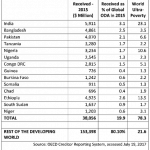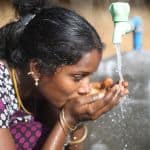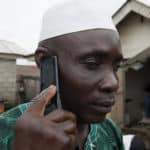An Under-Recognized Obstacle to Solar Access in Africa: The Impact of Foreign Exchange Risk — And How to Mitigate It
Solar energy projects are rapidly gaining traction in Africa, where abundant sunlight offers a sustainable solution to the continent’s energy challenges. Solar power, particularly distributed renewable energy (DRE) solutions, is driving economic growth, improving living standards and supporting the transition to a low-carbon future.
However, as a recent Acumen article clearly portrays, foreign exchange (FX) swings pose significant challenges to companies working in solar energy in Africa. Volatile exchange rates can drastically affect the costs of importing solar equipment, which is typically priced in hard currencies like US dollars or euros, while revenues are often earned in local currencies. This mismatch exposes companies to financial risks, eroding their profit margins and destabilizing their financial planning. Additionally, fluctuating FX rates complicate long-term contract pricing and increase the cost of servicing foreign-denominated debt. For these reasons, effective FX risk management strategies — such as local currency financing, hedging, and balancing currency exposure between expenses and revenues — are crucial for maintaining the financial stability and viability of solar projects and businesses.
These challenges and solutions are the subject of increasing attention among energy companies and in the broader global development sector. For instance, TCX — a fund that was founded by a group of development finance institutions, specialized microfinance investment vehicles and donors to offer a solution to currency risk — states in a recent report that currency risk can sharply undermine our ability to finance climate goals and the UN Sustainable Development Goals (SDGs). And businesses and projects across Africa’s solar energy landscape are exploring various financial models to help reduce these risks.
This article aims to elucidate how two common types of solar projects in Africa are affected by the critical challenge of foreign exchange swings, exploring the different strategies that have emerged to mitigate these risks and ensure the financial stability and sustainability of solar projects across the continent.
Understanding the Different Types of Solar Projects in Africa
A number of different types of solar projects have become common in Africa, the most prominent of which are solar purchase power agreements (PPAs) and distributed renewable energy (DRE) systems.
Solar purchase power agreements: Solar PPAs are long-term agreements in which a solar energy provider installs, owns and maintains a solar power system, and the customer agrees to purchase the power generated. These projects are typically large-scale and utility-focused, involving significant financial and logistical commitments.
The project timeline for solar PPAs generally spans 10-25 years, providing long-term energy solutions and locking both parties into extended contractual obligations. Their development, permitting and construction periods are lengthy, often requiring several months or years from planning to operationalization. These projects are large-scale and aimed at providing significant amounts of energy to utilities or large industrial clients, not residential customers, thus addressing substantial energy demands. Because of their size, and the lack of existing infrastructure in many African communities, high leverage is common, with significant upfront investments financed through debt and equity. Based on my experience in these markets, I estimate that 75-80% of these costs are for the equipment, which is mainly imported and must be repaid — in the currencies of the countries where it is manufactured — over the lifespan of the project.
Solar distributed renewable energy systems: Solar DRE systems, in contrast, are small to medium-scale and cater to individual homes, businesses and community projects, promoting localized energy independence. These systems offer flexibility and scalability, making them ideal for diverse applications across Africa. DRE encompasses solar home systems, solar mini-grids, inverters, solar irrigation and commercial solar installations.
Customer contracts for DRE projects typically last from one to three years, allowing for more flexible and adaptive energy solutions. The procurement and installation cycles for DRE are short, enabling rapid deployment and quicker realization of benefits. This leads to low leverage, reducing financial risk and making them more accessible to smaller investors.
The Impact of FX Challenges on Distributed Renewable Energy Companies
Between these two types of solar projects, distributed renewable energy systems are particularly well-suited to the African context due to their adaptability, lower financial risk, and ability to meet the immediate needs of diverse populations. They also offer effective solutions for managing currency and mitigating FX risk.
Many solar businesses in Africa provide customers with solar home systems and other DRE solutions, often through a pay-as-you-go mechanism. To understand how these solutions adapt to the African market, let’s examine a typical DRE project’s financing process, focusing on capital expenditures and local expenses.
Initial capital expenditures for DRE projects, such as solar panels, inverters and other essential equipment, are often made in hard currencies like US dollars, euros or Chinese renminbi. However, these expenses are typically incurred upfront, meaning the need for repayment in foreign currencies is not ongoing. On the other hand, operational and maintenance expenses are usually in local currencies, balancing the financial outlay. DRE projects are usually a 50/50 split between hard currency and local currency expenses, which helps mitigate overall FX exposure and reduces financial risk from currency fluctuations.
Customers often pay for solar home systems through a flat monthly fee, which the provider uses to pay off the equipment. This makes the exposure to currency fluctuations last only until the equipment is repaid, which typically happens within nine months. This period is significantly shorter than the lengthy commitments of utility-scale purchase power agreements, which are often financed with large amounts of foreign capital and have repayment periods spanning the 10 to 25-year lifespan of these projects. As a result, FX exposure for DRE projects is much less significant.
DRE companies’ client contracts are usually 12 to 18 months. This ensures that, for most of the solar assets’ lifespan, the company will incur only operational and maintenance expenses in the same local currency in which customers pay for services, reducing financial risk. From a cash flow perspective, DRE companies usually charge clients a deposit worth one to three months of service upfront, shortening the duration of the FX exposure from nine to six or seven months, further mitigating financial risk.
To illustrate how these concepts apply in practice, consider a small-size solar home system — the typical solution DRE companies use to provide rural African customers with first-time energy access. The unit costs, including import taxes, are around $65, while additional costs such as in-country shipping, deployment, customer acquisition, service and last-mile logistics amount to roughly the same. These additional costs are mainly paid in local currency. With roughly half of its costs incurred in local currency, the company’s average exposure to hard currency is minimal, significantly reducing risks and costs.
According to the TCX report mentioned above, in any given year, one in eight low-income countries will experience currency depreciation of 20% or more against the US dollar. For a $65 solar home system, this level of depreciation would result in a 1-2% loss over the nine-month period of FX exposure. Although this loss is not negligible, the project remains economical at the unit level — in stark contrast to the significant risks faced by solar PPA projects with prolonged FX exposure.
Currency Risk Mitigation Strategies for DRE Companies in Africa
However, despite DRE projects’ lower exposure to potential currency depreciations, many global investors perceive these risks as much higher than they actually are, due to a lack of understanding of the differences between PPAs and DRE projects. Since DRE is the most cost-effective way to electrify hundreds of millions, this misconception must be addressed. But though these risks are relatively small, it’s also important to talk about effective mitigation strategies that can help DRE projects navigate them.
Beginning with currencies, over 80% of lending to low- and middle-income countries by multilateral development banks and development finance institutions is denominated in hard currencies, particularly US dollars. One solution to this issue comes from local banks — like I&M Bank Rwanda, and Development Bank of Southern Africa and Standard Bank in South Africa, among others — which are stepping in and providing local currency loans to DRE companies. These loans, though smaller in size than those offered by multilateral development banks, can effectively mitigate these companies’ currency risk. Beyond reducing this risk, local currency financing can also align a company’s income and expenses, stabilizing its financial performance. And since DRE projects have become a go-to solution for electrification across the continent, local debt providers aiming to serve these projects have become much more prevalent: Well-operating companies can definitely use this option in all but the hardest-to-reach places.
Designated financial schemes are another meaningful de-risking mechanism for DRE companies. One of the most important financial schemes that’s supporting the sector is results-based financing (RBF), a model that provides companies with payments in exchange for achieving specific milestones or results. These payments provide funding promptly after a project’s successful deployment, reducing the need for long-term capital commitments. RBF also reduces the financial risk of projects by ensuring that payments are tied to successful outcomes, incentivizing performance and ensuring project viability. This approach has helped to establish a dynamic in which strong companies with a good track record of successful solar deployments are leading this somewhat young sector.
There are hundreds of millions of dollars currently invested in RBF for DRE projects across the continent. According to a recent report by GOGLA (the global association for the off-grid solar energy industry), since 2013, there has been substantial growth in the number of RBF programs launched, with a significant acceleration around 2019. In terms of the total funding committed through RBF, these programs have been predominantly concentrated in East and West Africa, which have seen $260 million and $116 million in funding, respectively, since 2012. These two regions have accounted for 58% and 26% of total global RBF funding, and The World Bank Group and African Development Bank Group have recently committed to connecting a combined 300 million people in Africa to distributed renewable energy systems — a goal they will pursue exclusively through RBF funding.
Further reducing currency risk for DRE providers, the ongoing reduction in solar technology costs has made DRE systems increasingly affordable and efficient. A 2020 report by the International Renewable Energy Agency found that between 2010 and 2019, the cost of electricity from utility-scale solar PV globally dropped by 82%, driven by a 90% reduction in the cost of solar modules. Across the board, the cost of renewables fell during that period, with concentrated solar power also seeing a drop of 47%. Solar technologies have followed a “learning curve” called Wright’s Law, which states that the cost of technology falls consistently as the cumulative production of that technology increases. This suggests that as solar technology advances, the value of solar services is likely to increase over time, helping to counteract the impacts of currency devaluation and inflation.
A Future Where FX will no longer be a Barrier for DRE
In conclusion, while both solar PPAs and DRE systems play crucial roles in Africa’s solar energy landscape, DRE offers unique advantages that align well with the continent’s diverse and dynamic energy needs. DRE’s flexibility, lower financial risk and rapid deployment potential make it an ideal solution for expanding access to clean, renewable energy across the region.
Africa accounts for around 20% of the world’s population but attracts less than 2% of global spending on clean energy, according to the International Energy Agency. And these energy investments need to more than double from their current total of US $90 billion, if the region hopes to achieve its energy development and climate goals by 2030 — at which point nearly two-thirds of this spending would go to clean energy.
By addressing the currency management challenges inherent to solar projects, DRE can play a major role in maximizing the efficiency of renewable energy investments, providing a sustainable and resilient energy future for African communities and businesses. It can help make SDG7’s goal of ensuring access to affordable, reliable, sustainable and modern energy for all more attainable, while giving entire communities real opportunities for advancement on all levels. And by providing effective solutions to the financial risks of foreign exchange fluctuations, DRE can help unlock investments into other sectors across the continent, as investors realize the immense opportunities Africa holds. This influx of investment could allow millions of Africans to enjoy better lives, work in diverse jobs, access higher education, experience gender equality and receive improved healthcare, putting the continent on the path towards a brighter future.
Yariv Cohen is the co-founder and CEO of Ignite Power.
Photo courtesy of Audy of Course.
- Categories
- Energy, Environment, Investing, Technology



